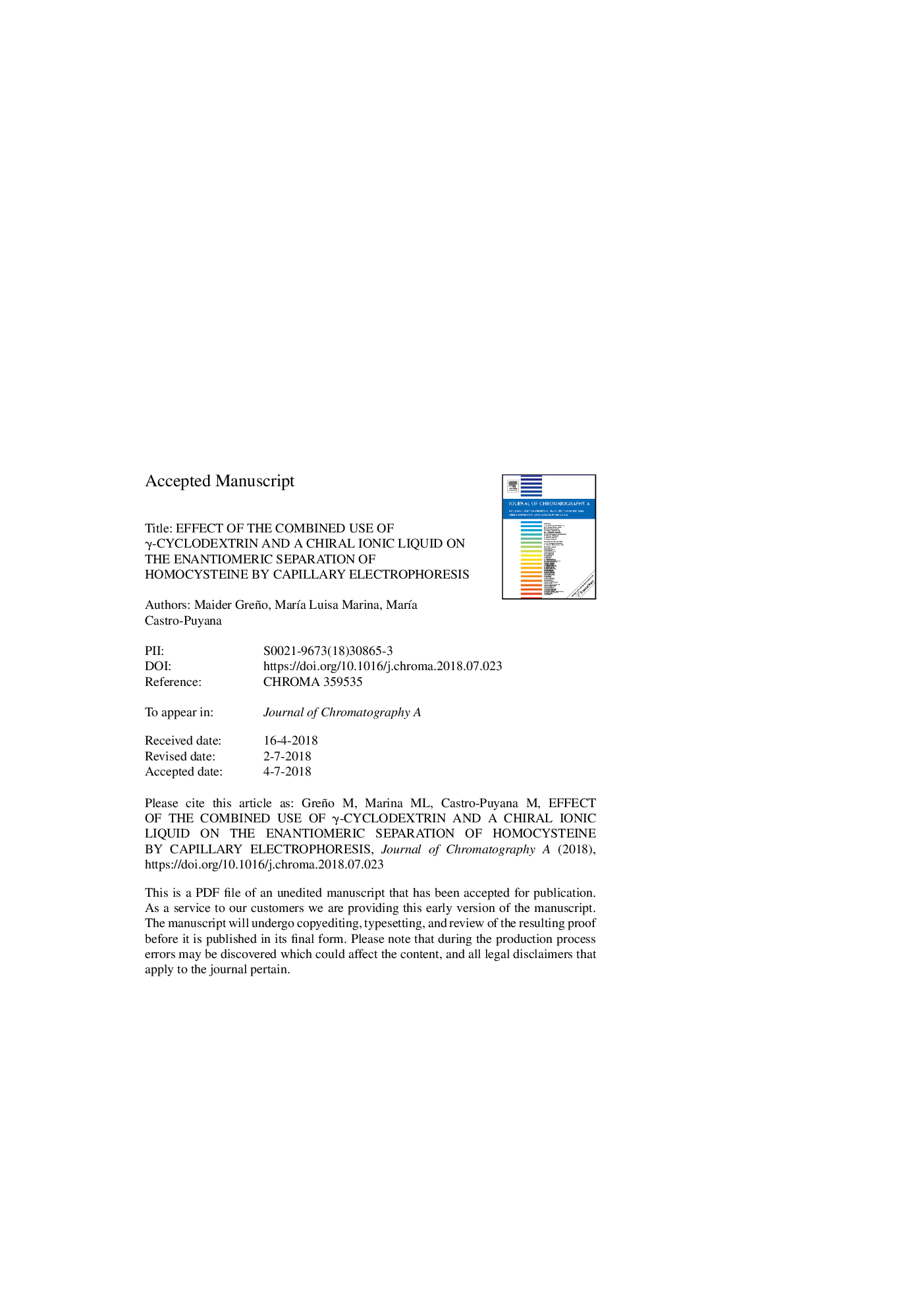| Article ID | Journal | Published Year | Pages | File Type |
|---|---|---|---|---|
| 7607404 | Journal of Chromatography A | 2018 | 33 Pages |
Abstract
The enantioseparation of the non-protein amino acid homocysteine by CE was investigated in this article using eleven neutral CDs and five chiral ionic liquids as chiral selectors. Using a previous derivatization step with FMOC and the subsequent separation under neutral conditions, homocysteine enantiomers were only separated when γ-CD or (R)-N,N,N-trimethyl-2-aminobutanol-bis(trifluoromethane-sulfon)imidate (EtCholNTf2) were employed as sole chiral selectors in the separation buffer. On the one hand, γ-CD gave rise to the enantiomeric separation in 10 min with a resolution value of 1.9, whereas EtCholNTf2 let to obtain a resolution value of 1.4 in more than 50 min. Then, the evaluation of the combined use of both selectors was also carried out, resulting in a considerable increase in the Rs. The best enantioseparation for homocysteine was obtained when 10 mM EtCholNTf2 was added to 50 mM phosphate buffer (pH 7.0) containing 2 mM γ-CD. In an attempt to discriminate specific chiral cation effect from the salt effect, the influence of adding LiNTf2 to the separation medium was also evaluated, resulting in lower resolution values for homocysteine when compared to those achieved with the addition of EtCholNTf2, indicating a synergistic effect between EtCholNTf2 and γ-CD. Interestingly, the enantiomer migration order changed depending on the use of a single chiral selector or dual systems. When EtCholNTf2 or γ-CD were employed as sole chiral selectors, D-enantiomer was the first-migrating enantiomer. However, an inversion in the migration order was observed when both selectors were combined in a dual system being the L-enantiomer the first-migrating one.
Related Topics
Physical Sciences and Engineering
Chemistry
Analytical Chemistry
Authors
Maider Greño, MarÃa Luisa Marina, MarÃa Castro-Puyana,
